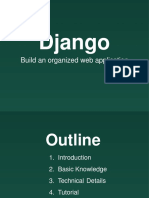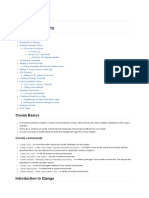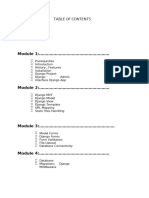0% found this document useful (0 votes)
45 views21 pagesDjango Notes
Django is a high-level Python web framework that facilitates rapid development and clean design, utilizing an MVT (Model-View-Template) architecture. It offers features such as ORM support, multilingual capabilities, and an administration GUI, making it easier to build web applications. The document provides a comprehensive guide on Django's installation, app creation, views, URLs, templates, models, and error handling.
Uploaded by
ramkumarlaksh74Copyright
© © All Rights Reserved
We take content rights seriously. If you suspect this is your content, claim it here.
Available Formats
Download as DOCX, PDF, TXT or read online on Scribd
0% found this document useful (0 votes)
45 views21 pagesDjango Notes
Django is a high-level Python web framework that facilitates rapid development and clean design, utilizing an MVT (Model-View-Template) architecture. It offers features such as ORM support, multilingual capabilities, and an administration GUI, making it easier to build web applications. The document provides a comprehensive guide on Django's installation, app creation, views, URLs, templates, models, and error handling.
Uploaded by
ramkumarlaksh74Copyright
© © All Rights Reserved
We take content rights seriously. If you suspect this is your content, claim it here.
Available Formats
Download as DOCX, PDF, TXT or read online on Scribd
/ 21





















































































